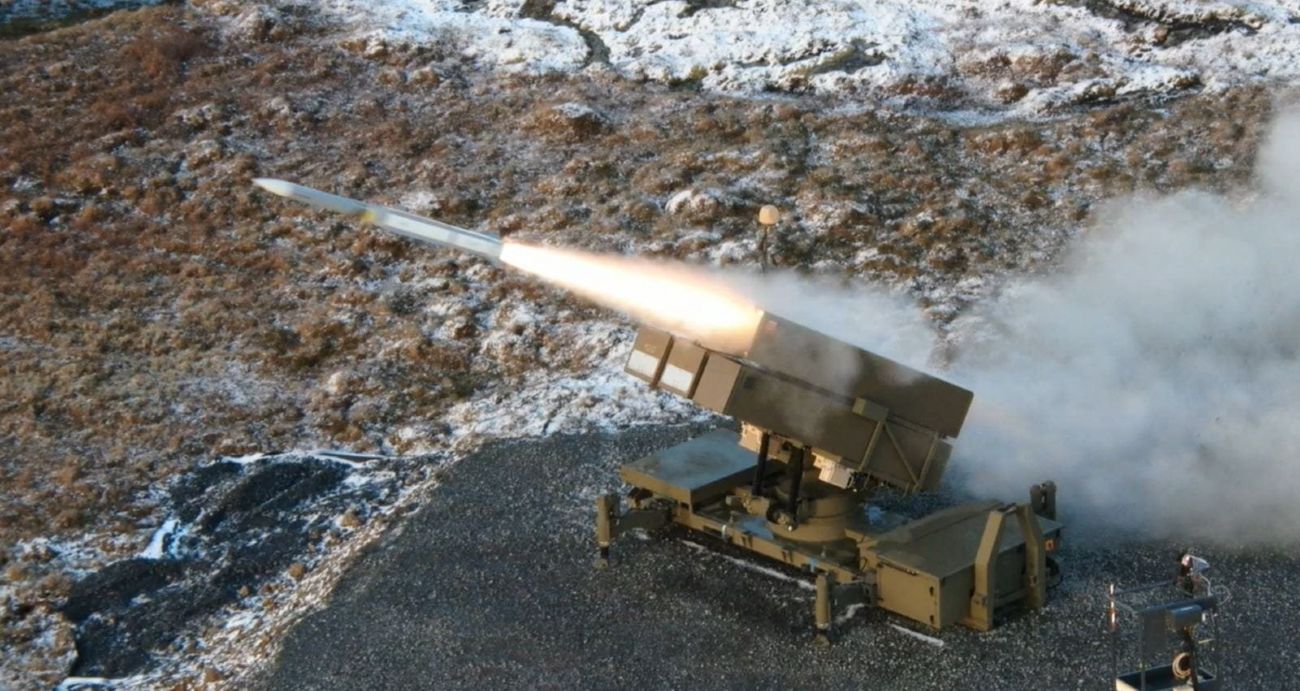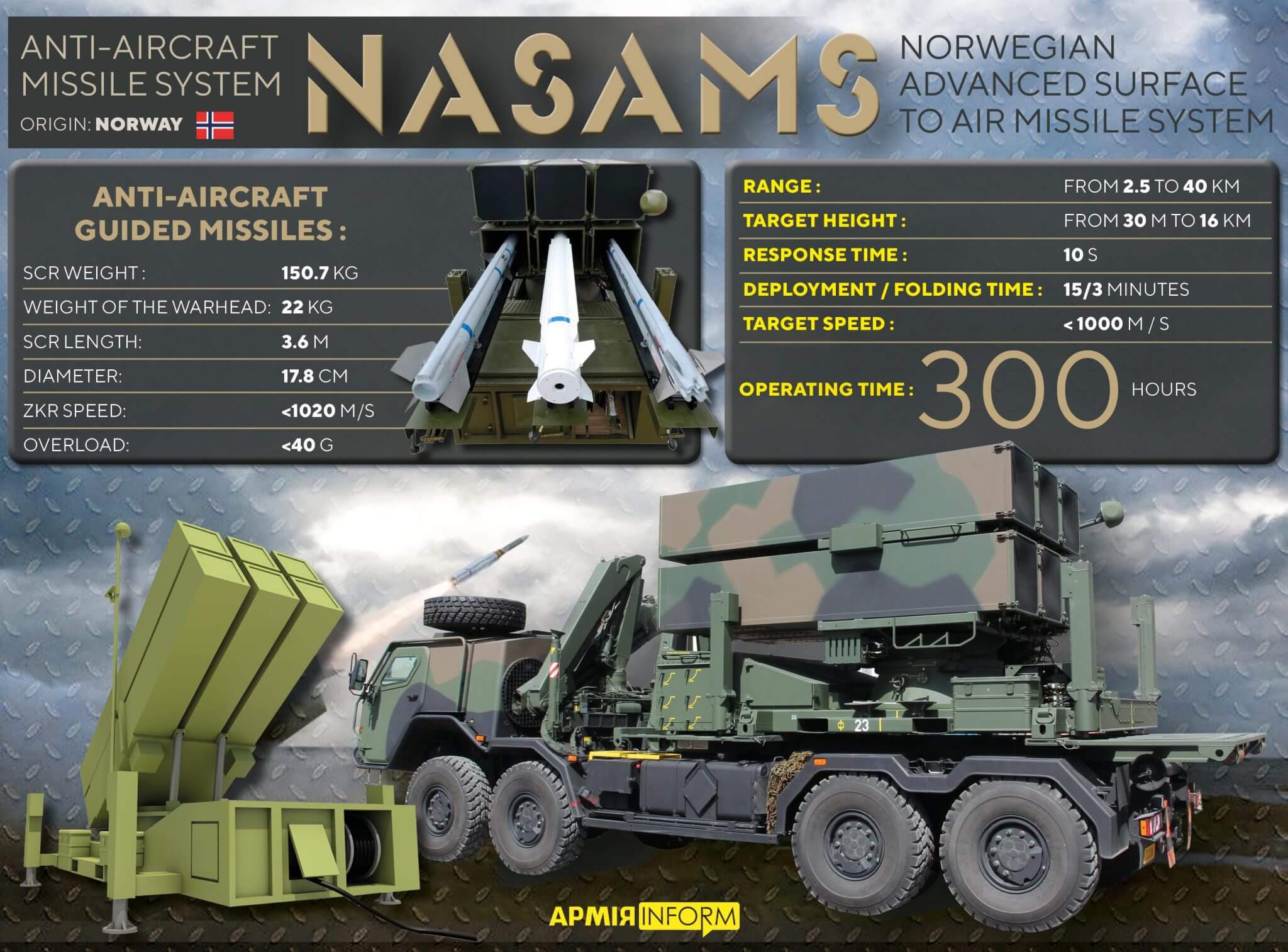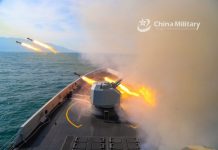The US promised to expedite the delivery of the National Advance Surface-to-Air Missile System (NASAMS) to Ukraine after Russia began an unprecedented aerial bombardment of its cities on October 10. As per certain reports, the systems are in the process of being installed in Ukraine.
The manufacturer of NASAMS, Raytheon Technologies, announced last month that it had delivered the first two of the NASAMS air defense systems promised to Ukraine to the US government. According to NYT report, about 100 Ukrainian troops are already being trained on the NASAMS by Norwegian servicemen in Germany.
An embattled Ukraine has repeatedly requested for NASAMS to combat the attack unleashed by Russia using cheap, expendable kamikaze drones it bought from Iran. In the face of ferocious Russian attacks targeting power grids and water infrastructure, the calls for NASAMS have only got louder.
NASAMS is a powerful system the US uses to protect the sensitive airspace surrounding the White House and US Capitol in Washington. The missile system reportedly has a range of more than 100 miles or roughly 161 kilometers, and the troops in Kyiv believe that it would be a game-changer, much like the HIMARS that arrived earlier this year.
Besides the NASAMS, the IRIS-T systems from Germany have already been deployed by Ukraine and have been touted to be very effective. However, NASAMS is considered superior as it is the first short to medium-range ground-based air defense system that employs network-centric capabilities.

Further, throughout this conflict, Russia has deployed cruise missiles launched from land, air, or sea to attack critical assets in Ukraine. Identifying and engaging cruise missiles designed to follow the terrain is challenging, as seen in the ongoing conflict, where Ukraine’s air defense systems are overwhelmed and struggling.
The state-of-the-art capabilities of the Ukraine-bound NASAMS include a net-centric design, numerous simultaneous engagements, beyond visual range (BVR) capabilities, and its ability to be tightly integrated and tailored to a country’s integrated air and missile defense system (IAMD).

A military expert, Roman Svitan, went so far as to say that two NASAMS air defense batteries that the United States will hand over to Ukraine can “close” the sky over Kyiv. However, some other military experts have expressed skepticism about the system being a game-changer.
EurAsian Times decided to examine whether the NASAMS could be of the same utility to Ukraine as it is to other states, including the US.
Can NASAMS Change The Game For Ukraine?
Roman Svitan said in his commentary that the NASAMS employs the AIM-120 Advanced Medium Range Air-to-Air Missiles (AIM-120) primarily used by fighter pilots for air combat and has demonstrated success in aerial battles.
Stating that the missile could also be launched from the ground, he pointed out how specific tubes were created for it to be fired from NASAMS.
The military expert impressed upon the capability of the NASAMS by further saying that this system uses these air-to-air missiles to destroy aerial targets such as cruise missiles, UAVs, or planes, a function that fighter pilots perform in air combat using these same AIM-120 missiles.

The AIM-120 AMRAAMs are still widely used by the United States and form the cornerstone of its combat capability. However, it is unclear whether these missiles will be a part of the NASAMS package for Ukraine.
The NASAMS can fire AIM-9X Sidewinder, Advanced Medium Range Air-to-Air Missile (AMRAAM), and AMRAAM-Extended, as was demonstrated in a test earlier.
Further, if Ukraine receives the AIM-120 AMRAAMs, it is pertinent to note that these missiles have some limitations when fired from the NASAMS. When launched from a fighter jet, the AMRAAM has high launch energy (speed & height). However, when launched from the ground, the missile does not have the same power. It must climb and accelerate, using fuel from its rocket motor.
As a result, the system’s range is restricted to about 30 kilometers which renders the system somewhat incapable of providing area defense, as previously observed by EurAsian Times.
NASAMS is a point defense system developed to defend high-value targets. It is deployed around Washington, and at one point, India was set to deploy it around Delhi.
In the short run, NASAMS’ short range could be disadvantageous since it may be needed to strike several infrastructure, command, and communication targets. Therefore, Ukraine would need more than two NASAMS.
In contrast to infrastructure targets, NASAMS is probably being bought to defend Ukrainian leadership and powerful command and control centers that Russia has meant to single out. When NASAMS is deployed, Russia could use ballistic missiles or Geran-2 suicide drones to attack.
However, the NASAMS projected as a panacea will also be unable to defend against hypersonic missiles like the AS-24 Killjoy deployed to Belarus.
Iain Boyd, director of the Center for National Security Initiatives at the University of Colorado, told Newsweek that NASAMS could help Ukraine from a capacity perspective but would struggle to knock out many more of the Killjoys.
Despite its limitations, this system could prove to be an effective deterrence against Russia. The US has not specified which variant or configuration of the system is being delivered to Kyiv, but experts speculate that it would most likely be NASAMS-II.
If media reports are to be believed, the system will be handed over to Ukraine as soon as the Ukrainian troops complete their training.
- Contact the author at sakshi.tiwari9555(at)gmail.com
- Follow EurAsian Times on Google News




